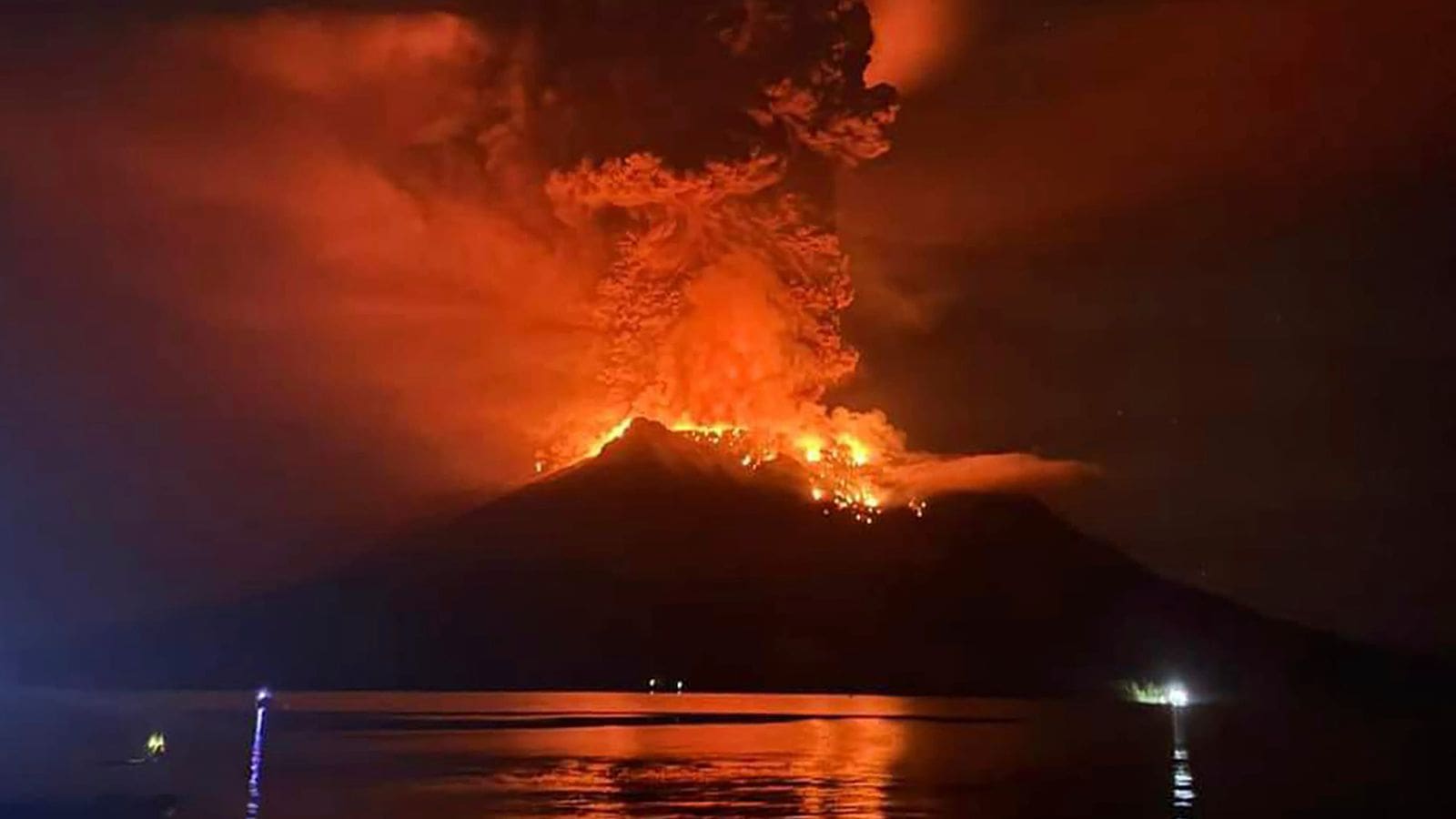Rising from the Depths: The Volcanic Agitation of Mount Ruang
In the quiet darkness of a Tuesday night in North Sulawesi Province, Indonesia, the earth reminded everyone of its fiery core as Mount Ruang erupted, catapulting ash and smoke over two kilometers into the sky.
This dramatic spectacle marked the beginning of a series of eruptions that would see more than 11,000 residents hastily evacuating under the cloak of uncertainty and ash.
The Awakening Giant
Mount Ruang, a 725-meter colossus, is no stranger to the limelight, having etched its power in the history books with a catastrophic eruption in 1871 that triggered a tsunami. This week’s activity began at 9:45 PM local time, with the volcano asserting its might in a display that lit up the night sky with billowing smoke and cascading lava flows that painted the dark waters a glowing red.
Local authorities, quick to respond, escalated the alert level to four—the highest possible—while expanding the exclusion zone from four kilometers to six. Abdul Muhari, head of the disaster agency’s data communications and information centre, underscored the urgency of the situation, noting that everyone within this newly defined danger zone had to move to safer grounds immediately.

A Community on the Move
The initial exodus saw over 800 individuals relocate to Tagulandang Island, with subsequent eruptions necessitating further evacuations to the provincial capital, Manado.
The logistics of moving thousands in the face of an ongoing natural disaster are daunting. Yet, the community’s resilience and the coordinated efforts of local authorities have painted a picture of determination and solidarity.
The Broader Impact
The eruptions have not only disrupted lives but also air travel. The spread of volcanic ash led to the temporary closure of Sam Ratulangi International Airport, a crucial hub with links to China, Singapore, and South Korea. Flights from Kota Kinabalu International Airport in Malaysia also faced significant disruptions, emphasizing the far-reaching impacts of such natural events.
Important Travel Update:
Malaysia Airlines has suspended several flights to/from KL International Airport (KUL) to Sabah and Sarawak today, 18 April 2024 due to the volcanic eruption at Mount Ruang, Indonesia.
Our priority is your safety. We're closely monitoring the situation…
— Malaysia Airlines (@MAS) April 18, 2024
A Geological Hotspot
Indonesia’s geographic positioning on the ‘Ring of Fire’—a major area in the basin of the Pacific Ocean where many earthquakes and volcanic eruptions occur—makes it a hotspot for seismic and volcanic activity. The country hosts 120 active volcanoes, and the memory of the 2018 Anak Krakatoa eruption, which claimed hundreds of lives, is still fresh.
Reflecting on Nature’s Might
The ongoing situation at Mount Ruang is a stark reminder of the dynamic and sometimes perilous nature of our planet. As scientists and authorities work to monitor and respond to these geological events, the resilience of the affected communities continues to be tested. The eruptions serve as both a spectacle of nature’s raw beauty and a call to respect and prepare for its potential fury.
In the face of such overwhelming natural power, the spirit of the people in North Sulawesi is a testament to human resilience. The coming days will undoubtedly be challenging, but also a chance for collective learning and adaptation in the shadow of one of nature’s most awe-inspiring phenomena.
